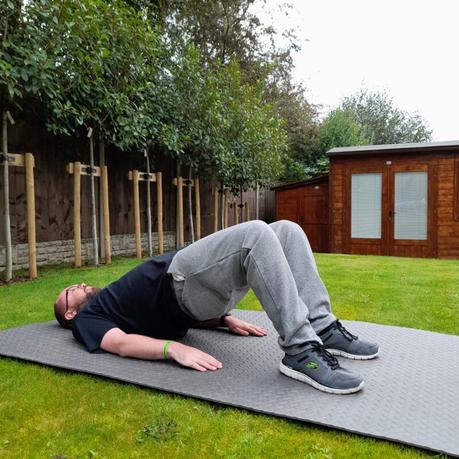The Importance of Exercise in Superficial Siderosis
We all know that keeping fit is good in general, but even more so when it comes to someone who is living with superficial siderosis or other similar neurological conditions. I can't stress enough how much I have benefited physically and mentally from seeking out specialist neuro physiotherapy (or physical therapy as it's known in the U.S).
In this piece, I'm going to talk about the home exercise regime, which I compiled alongside the information and guidance that I had from an expert neuro physiotherapist. I was exercising prior to seeking guidance from a specialist, but it has really helped to put me on the right path, and I cannot recommend it enough. As superficial siderosis is unique to the individual, it's essential to get help from a professional to suit your specific needs.
Warming Up

Spasticity is a condition in which individual muscle contrac...
It's always a good idea to warm up before getting started, but in the case of having superficial siderosis, you may have spasticity More or muscle waste, so in turn, stretching may be part of the regime you're given to improve your mobility. For example, I have spasticity in my calves so do various exercises to help loosen them up. Personally, I find this helps immensely and is something I do every day as soon as I wake up in the morning and is part of my daily routine.
Even though I stretch in the morning, I carry out a series of stretches to cover each area of my body before I begin any of the exercises my neuro physiotherapist has set me. It's important to do this, so you don't pull any muscles. I've even found that some of the stretches have helped with my balance issues, so it's not only helping my muscles and spasticity but improving my balance as well!

Stability Floor Exercises
Stability is still an issue for me; it's something I'm continually working on. If you're like me, you may find when you walk, you veer to one side or the other. Although I found that this exercise didn't help stop me from veering to the side, it helped strengthen my pelvic muscles again so that I could counteract it.
The Exercise Step
During my weekly sessions with my neuro-physiotherapist, I was shown a few exercises using an adjustable step. A simple bit of gear that can be adjusted in height to train the legs and improve balance. As I mentioned before, I have spasticity in my calf muscles, so my physio advised me to carry out calf raises every day using the step. Another issue I have is shaking in my legs when walking down a slope or down steps/stairs. I was advised to stand on the step and use it to simulate the motion of walking down steps by standing on one leg whilst moving the other leg over the front of the step and bring my leg back up again. I do however find the more pressure I put on the leg I'm balancing on triggers the shaking. I do 10 sets on each leg then I carry the same thing out in the reverse motion by putting my leg over the back of the step as opposed to the front. Due to the balance issues, I need to hold onto something whilst doing this.
The Machines
I'm lucky enough that I had a few exercise machines at home that I had bought prior to the superficial siderosis kicking in. I find the cross trainer and stationary exercise bike are a great way to build up muscles in the legs without having to worry about falling over due to poor balance. The cross trainer specifically is great for giving my calf muscles a good workout.
Treadmill
I did however invest in a treadmill, the reason being with superficial siderosis, it can be difficult to walk any distance (again dependent on the individual). The best thing about the treadmill is you can press the stop button and rest if needs be. My physiotherapist showed me how to walk without falling over my own feet. I had never even thought about the motion of walking before, so this was a game-changer for me when moving about. Whilst taking a step forward, focusing on digging the heel into the ground and rolling onto the foot and so forth. It really did take some getting used to because I had adapted my walking to counteract the balance issues of the superficial siderosis. I practise this every day so that the technique is embedded in my head, and I don't go back to walking flat-footed.
Another good thing to practise is to look up and down and then left to right whilst walking. Focusing on an object in the room and making sure you are continuing to walk in a straight line. This can cause dizziness but helps the brain to get used to the head movements when walking.
Balance and Vestibular Exercises
Standing in the corner of a room (so if you do stumble, the wall will support you), closing your eyes, and counting to 30 might sound silly, but it's significantly improved my balance. Of course, there are different stages to doing this, and I'd recommend only moving onto the next stage once you have mastered the previous one, but even then, it's worth redoing each one to make sure it hasn't slipped your mind.
Remember...
Please don't overdo it and know your limits. Too much exercise can have a negative effect on the body, and rest periods are essential to getting the most out of exercise (as is sleep). Everyone's needs are specific to how they have adapted to superficial siderosis and how it has affected them, so please seek an expert in this field to get a personal assessment and guidance for your needs to improve/maintain your mobility.

